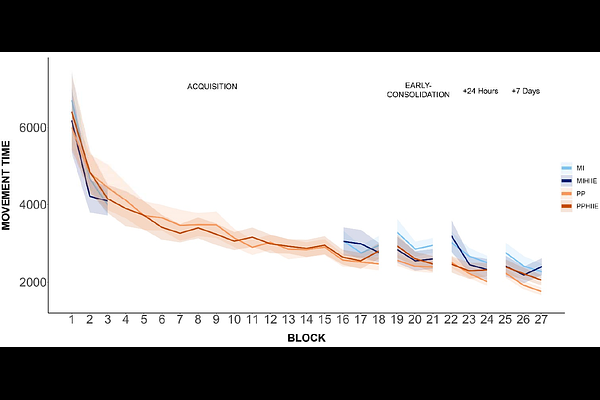High-intensity interval exercise affects explicit sequential motor consolidation with both physical and mental practice

High-intensity interval exercise affects explicit sequential motor consolidation with both physical and mental practice
Digonet, G.; Lapole, T.; Gelebart, J.; Bouvier, J.; Blanco, L.; Magaud, J.; Pialoux, V.; Pingon, M.; Stauffer, E.; Debarnot, U.
AbstractHigh-intensity interval exercise (HIIE) is known to enhance motor consolidation following physical practice (PP), but its effects on sequential motor learning (SML) through PP or motor imagery (MI) remain unclear. We examined whether HIIE modulates SML consolidation in 48 participants who learned an explicit SML task through PP or MI. Performance was assessed before and after acquisition, after HIIE or rest, and at 24 hours and 7 days. Both PP and MI improved performance, with greater gains for PP (p = 0.042), and both induced intracortical disinhibition (p = 0.03). HIIE increased BDNF (p = 0.044) and lactate levels (p < 0.001), markers typically linked to neuroplasticity, yet unexpectedly impaired SML at early (p < 0.01) and late consolidation (p < 0.05), without affecting excitability. These findings challenge the presumed coupling between exercise-induced biomarkers and behavioral gains, suggesting that HIIE may hinder consolidation when explicit components of motor learning are involved.